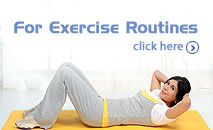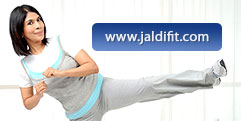 PILATES is a unique exercise system that gives lasting results: a leaner, sculpted body, increased abdominal and lower back strength and improved posture.
PILATES is a unique exercise system that gives lasting results: a leaner, sculpted body, increased abdominal and lower back strength and improved posture.
Joseph Pilates, a German, who devoted his life to the study of physical education, founded this system of exercising.
Pilates training focuses around strengthening the “core”. The core is defined as the wide band of mid-section from the navel to the lower back, extending from the lower ribs to the pelvis. Each and every exercise in Pilates focuses on strengthening the core. You will be surprised how challenging it is to perform all exercises using these muscles.
The Pilates method of body conditioning is not a tedious technique that leaves you over-trained. In fact, the training method is quite the opposite of most other physical forms of exercise. It allows the movements to stretch your body as you simultaneously work on the strengthening aspect. By doing this you create a habit of relaxed effort.
The benefits are a fitter body, better posture and balance, increased abdominal and back strength and a relaxed mind.
No. You could do a pilates mat routine to get amazing results. You do not have to use spring-driven machines to achieve your goals.
No. Pilates offers different levels of intensity and challenge. You can start at a basic level and progress according to your ability and fitness goals.
The emphasis in pilates is body alignment, precision of movement and use of core muscles. Moving to the next level of challenge is encouraged only if the body is able to maintain quality of movement. Whereas in yoga, the goal is to get into the pose and hold the pose. Also, the breathing technique used in pilates differs from that of yoga.
Pilates is not an aerobic activity, so you need to include some form of aerobic activity to burn calories. Choose something that you would enjoy, such as walking, running, swimming, tennis or cycling.
A pilates session twice or thrice a week will give you great benefits. Aim to do a pilates session every other day for the muscles to recuperate.
Results are relative to individual fitness levels. On an average it would take10 to 12 sessions to feel a difference.
The Pilates philosophy is based on six main principles:
1. Breath: Correct breathing oxygenates the blood and increases circulation. Inhale, through the nose and exhale through the mouth.
2. Concentration: There are no mindless or careless moments in pilates. Rather than allowing your thoughts to wander, focus your mind on the task at hand.
3. Control: Pilates requires mind-body control. Every motion should be planned for. This method reduces the risk of injury in the body.
4. Centering: Pilates is often described as “ movement flowing out from a strong core”. This is the foundation of all movements.
5. Precision: Precision elevates the benefits of each exercise from superficial to intense. It is not the structure of the exercise but the precision with which you perform them that determines your results.
6. Flow: Movement is by nature continuous. In pilates, it is important to concentrate on flow during each individual exercise.
The hundred
Lie on your back with your knees bent. Inhale, and then exhale as you lift shoulders, arms and feet off the floor. The legs can be at a 90-degree angle or extended straight up, to increase challenge. Now, pump arms up and down, initiating movement from the shoulders. Inhale, for 5 pumps and exhale for 5 pumps. Pump 100 times.
Rolling side to side
Lie on your back with your knees bent and stretch your arms out to the sides. Inhale, as you drop your legs to one side, turn your head gently to the opposite side. Exhale, as you bring your legs back to the centre. Switch sides. Do each side 6 to 10 times.
Roll up
Lie on your back with your knees bent and take your arms overhead. Inhale, then exhale, as you roll up lifting your spine off the mat slowly. Lengthen your spine as you lift up and inhale as you slowly lie down on the mat again. Repeat 5 to 10 times.
The saw
Sit tall, with legs extended and open slightly wide. Stretch your arms to your sides, and inhale, stretching your spine upwards. Twist from your waist to the left, and exhale as you bring your chest towards your right leg and inhale, lengthening your body up. Switch sides. Do each side 6 to 10 times.
Swimming
Lie on your stomach, arms extended in front of you. Inhale as you bring your right leg and left arm up into the air simultaneously. Switch arms and legs by lifting your left arms and right leg above the mat. Repeat 6 to 10 times.
- Benefits of Exercise
- Exercise and the Heart
- Exercise and the Bones
- Exercise and Hypertension
- Exercise Excuses and how to beat them
- Over Exercising is bad for you
- Kids gotta Exercise too!
- What is Obesity
- Fitness Triangle
- Running, Skipping and Cycling
- Walking
- Swimming
- Common Fitness Myths
- Evaluate your Fitness Quotient
- Wellness Tools and Charts



